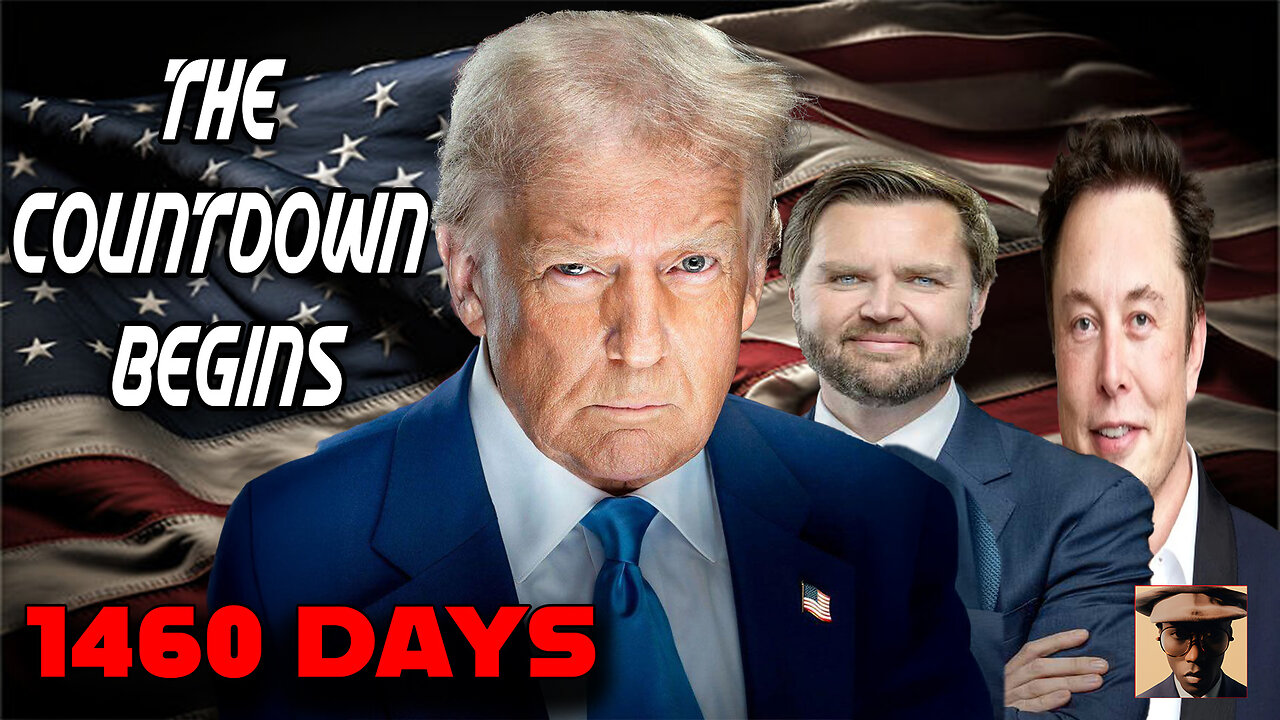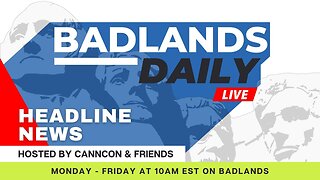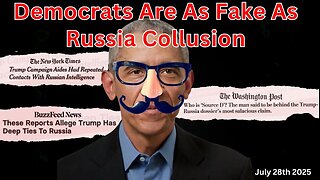Premium Only Content

President Trump Inauguration The Countdown Begins for 4 Years
Why is tech giant SoftBank investing over $100 billion in the US? BANGKOK (AP) — Japanese tycoon Masayoshi Son and President-elect Donald Trump have announced plans for technology and telecoms giant SoftBank Group to invest $100 billion in projects in the United States over the coming four years.
https://cash.app/$MoeDotJ
Subscribe to my New Channel: https://youtube.com/@TheMoeUKnow
Join my discord: https://discord.gg/SYVVWWnrFQ
▬▬▬▬▬▬▬▬▬▬▬▬▬▬▬▬▬▬▬▬▬▬▬▬▬▬
FOLLOW ME ON
▶Instagram: https://instagram.com/Moedotj
▶Twitch: Twitch.tv/MoeDotJ
▶Twitter: https://twitter.com/Moedotj
▶Snapchat: MoeDotJ
▶ Facebook: https://www.facebook.com/MoeDotJ/
▬▬▬▬▬▬▬▬▬▬▬▬▬▬▬▬▬▬▬▬▬▬▬▬▬▬
SUBSCRIBE TO MY CHANNEL CLICK LINK BELOW!!!!!
https://www.youtube.com/channel/UCwsq...
What we're covering
• Donald Trump has been sworn in by Chief Justice John Roberts as the 47th president of the United States, marking a political comeback after being convicted of felonies.
• In his inauguration address, Trump vowed that “the golden age of America begins right now.” He listed his priorities — on trade, immigration and national security — while criticizing President Joe Biden, who sat nearby, and declaring “America’s decline is over.” He also recalled the assassination attempt last year that nearly claimed his life and said he was “saved by God to Make America Great Again.” Read our fact check from his address.
Trump said the investments in building artificial intelligence infrastructure would create 100,000 jobs, twice the 50,000 promised when Son pledged $50 billion in U.S. investments after Trump’s victory in 2016.
Consider tariffs. Trump put tariffs on Chinese goods, steel and aluminum, and others in his first term. Those policies shattered consensus by showing that tariffs can be used to successfully raise revenue—effectively paying for a third of the 2017 Tax Cuts and Jobs Act—with no discernible rise in inflation. In a new study for Hudson Bay Capital, we show that the tariffs caused the dollar to move higher by close to the exact amount the tariff rate went up, offsetting the tariffs. Overall after-tariff dollar import prices were unchanged, explaining the total lack of price pressures or drags on growth.
-
 1:14:21
1:14:21
Dear America
3 hours agoBongino Confirms The TRUTH!! Says He’ll “Never Be The Same” 👀 + JD 2028?!
123K200 -
 LIVE
LIVE
Caleb Hammer
1 hour agoScumbag Husband Destroys Marriage With Secret Debt | Financial Audit
115 watching -
 1:41:12
1:41:12
Badlands Media
10 hours agoBadlands Daily: July 28, 2025
35.9K5 -
 LIVE
LIVE
JuicyJohns
3 hours ago🟢#1 REBIRTH PLAYER 10.2+ KD🟢 !loadout
155 watching -

Wendy Bell Radio
7 hours agoDemocrats Are As Fake As Russian Collusion
69.8K39 -
 48:34
48:34
Randi Hipper
2 hours agoBITCOIN TAKES OVER WALL STREET AS IT NEARS ALL TIME HIGHS
20.9K -
 57:51
57:51
MTNTOUGH Podcast w/ Dustin Diefenderfer
9 hours agoSam Mackey: From Juvenile Hall to a New Start in the Military | MTNPOD #126
18.7K -
 2:11:33
2:11:33
Matt Kohrs
13 hours agoMarket Open: New Highs, Breaking Trade News & Tech Earnings Report || Live Trading
32.9K2 -
 1:08:41
1:08:41
JULIE GREEN MINISTRIES
4 hours agoUNPRECEDENTED CHANGE IS COMING TO THE TAX SYSTEM IN THE UNITED STATES
132K197 -
 1:21:44
1:21:44
Chicks On The Right
6 hours agoPot-Banging for Gaza? Sydney Sweeney Backlash & Harry Enten UNLOADS on Candace | Chicks on the Right
31.6K11